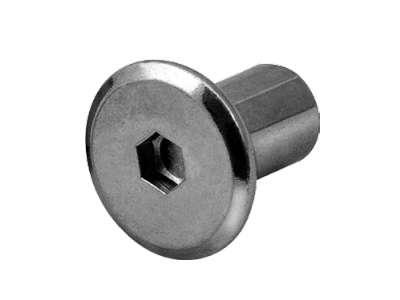Applications of Sleeve Nuts
2024-07-19
A sleeve nut, also known as a coupling nut or extension nut, is a type of fastener used to connect two threaded rods or other threaded fasteners. It is a cylindrical metal nut with internal threading that extends along its length, allowing it to join or extend the length of threaded components.
Design and Structure:
- Shape: Cylindrical, longer than standard nuts, providing extended threading.
- Threading: Internal threads that run the entire length of the nut, matching the thread pitch and diameter of the rods or bolts being connected.
- Materials: Typically made from steel, stainless steel, brass, or aluminum, often with coatings for corrosion resistance.
Types:
1. Standard Sleeve Nut:
- A simple cylindrical nut used for general purposes.
2. Reducing Sleeve Nut:
- Designed to connect threaded rods or bolts of different diameters.
3. Hex Sleeve Nut:
- Features a hexagonal outer shape for easier installation with wrenches or sockets.
4. Slotted Sleeve Nut:
- Includes slots for a screwdriver or other tools for installation.
Applications:
1. Construction:
- Used to join threaded rods in structural applications, such as in concrete forms or scaffolding.
2. Machinery and Equipment:
- Connects components in mechanical assemblies where extended threading is needed.
3. Furniture Assembly:
- Joins components in furniture construction, especially for items requiring disassembly and reassembly.
4. Automotive:
- Extends threaded parts or connects rods in custom automotive applications.
5. Electrical Installations:
- Used in securing and extending threaded conduit pipes.
Advantages:
1. Extended Length:
- Allows for the extension of threaded rods, providing flexibility in assembly and construction.
2. Strong Connection:
- Provides a secure and stable connection between threaded components.
3. Versatility:
- Suitable for a wide range of applications across different industries.
4. Ease of Installation:
- Can be easily installed with standard tools, especially if designed with hex or slotted ends.
Disadvantages:
1. Alignment Requirement:
- Proper alignment of threaded rods is essential for effective use.
2. Limited Load Capacity:
- May not be suitable for high-stress applications compared to other types of fasteners.
3. Corrosion Potential:
- Requires appropriate material selection and coatings for use in corrosive environments.
Installation Tips:
1. Thread Compatibility:
- Ensure that the thread pitch and diameter of the sleeve nut match those of the rods or bolts being connected.
2. Alignment:
- Properly align the threaded rods before tightening to ensure a secure connection.
3. Torque Application:
- Apply appropriate torque to avoid over-tightening, which can damage the threads.
Conclusion:
Sleeve nuts are versatile fasteners used to join or extend threaded components in various applications. Their cylindrical design and internal threading provide a strong and secure connection, making them useful in construction, machinery, furniture assembly, and more. Proper selection and installation ensure effective use and longevity in their respective applications.



